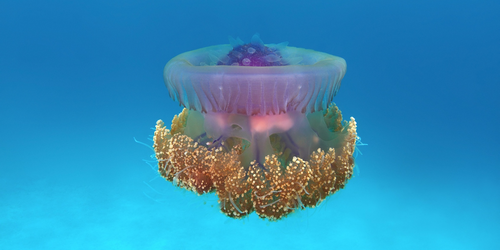How Nature’s Donuts Get Their Wrinkles
Many biological structures are toroidal, or donut shaped. These structures often contain intricate wrinkling patterns that change as the object grows or contracts. Now Fan Xu of Fudan University, China, and his colleagues have developed a theory that can predict when different patterns will occur [1]. The researchers say that their theory could aid the design of multifunctional material surfaces based on dynamic wrinkling patterns.
Xu and his colleagues began by devising a mathematical model for a general toroidal structure. This model has two key parameters: one that characterizes the size of the structure’s hole and another that quantifies the structure’s stiffness. The researchers then used this model to derive a scaling law that captures how growth or contraction of the structure affects the patterns on its surface. Finally, they verified the model’s predictions by performing experiments on toroidal materials that shrink when cooled or swell when placed in a certain chemical environment.
The team found that toroidal structures with large holes typically develop surface wrinkles close to the hole, whereas ones with smaller holes tend to form them away from the hole. Additionally, soft structures often have localized dimples, while stiff ones have bidirectional stripes or a mixture of spiral and axisymmetric stripes. Lastly, moderate-stiffness structures are typically adorned with periodic hexagonal patterns or a combination of hexagonal and labyrinth-like patterns. The researchers also found that their theory can predict wrinkling patterns in some nontoroidal structures, suggesting that it could be applied to a diverse range of objects.
–Ryan Wilkinson
Ryan Wilkinson is a Corresponding Editor for Physics Magazine based in Durham, UK.
References
- T. Wang et al., “Curvature-regulated multiphase patterns in tori,” Phys. Rev. Lett. 130, 048201 (2023).




